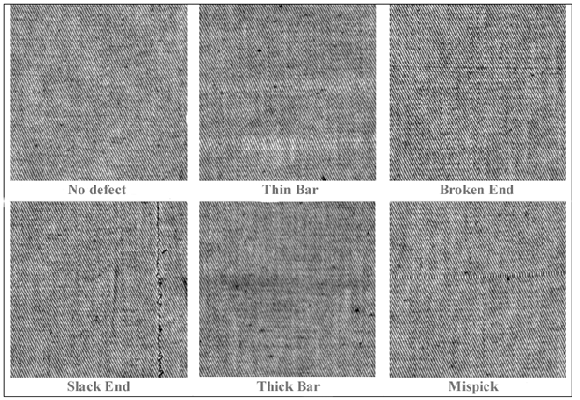
The problem of classification of the defects occurring in a textile manufacture is addressed.
A new classification scheme is devised in which different features, extracted from the gray level histogram, shape, and co-occurrence matrices, are employed. All of these features are classified using a Support Vector Machines (SVM) based framework. An accurate analysis of different multi-class classification schemes and SVM parameters has been carried out. The system has been tested using two textile databases, showing very promising results.
The analysis of raw textile images is an important feasible application of the pattern recognition research. In this case, the aim is to automatically detect and classify possible defects occurring in raw textile.

A new approach is proposed, able to analyze images of raw textiles for finding and classifying the defects in a precise set of typologies. The focus is only on the classification stage, and the defects' detection has been assumed already performed.
The proposed method assumes that the information needed for characterizing the different types of defects can be extracted from the shape, the grey-level intensity, and the texture alteration. Such information is derived by computing from the image three kind of features, extracted from the gray-level histogram, the shape of the defect, and from the co-occurrence matrix.

In our approach, a sort of study of the function histogram H(x) has been performed: first, the profile was smoothed by applying a mean filter. Second, a set of features, like max and min values, contrast, etc., are computed.
In the present work, a set of features like area, centroid, major and minor axis length, etc., have been used.

Several gray level Co-occurrence Matrices (CMs) for different values of the dipole have been used. The dipole is defined as a vector D = (alpha,theta), where alpha is the dipole orientation and theta is the length. The length parameter, together with the number of gray levels of the image, is crucial for the effectiveness of the matrix, and strongly depends on the type of the texture under analysis.
Typically, several features are extracted from the CMs, computed for several empirical vectors D, resulting in a large set of often correlated features. In our approach, we propose an alternative use of the co-occurrence matrices, that computes the best dipole length for many orientations for every specific textile analysed, and is able to avoid the feature computation by normalizing CMs to probability density matrices.
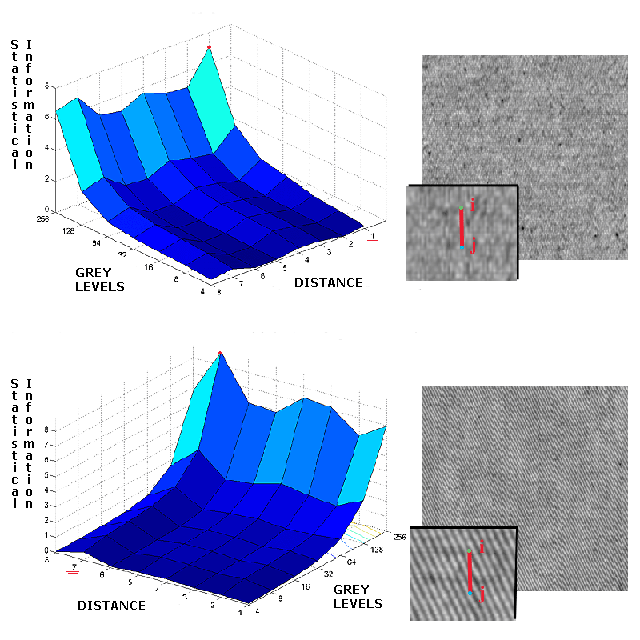
The CM coefficients are directly used as features for the Support Vector Machine architecture. This permits to remove the step of feature computation, which is the major drawback of the technique, giving the task of finding real usuful data in different CM to SVM's training phase.
The basic SVM scheme works only for binary classification, and, in order to deal with a multi-class problem, a generalized scheme is introduced. We have compared three schemes:
The best scheme resulted the SVM 1-vs-1 Binary Decision Tree: this scheme is also the most efficient in terms of time required for training and classification.
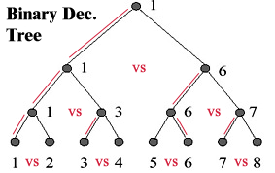
The proposed approach has been tested using two databases:
In all cases we have included the class of "No Defect'', in order to validate and refine the defect detection scheme. We have computed the Leave One Out (LOO) error, reporting the results for each class of defect.
The defects nomenclature used derive from Italian Textile Industry and literature.
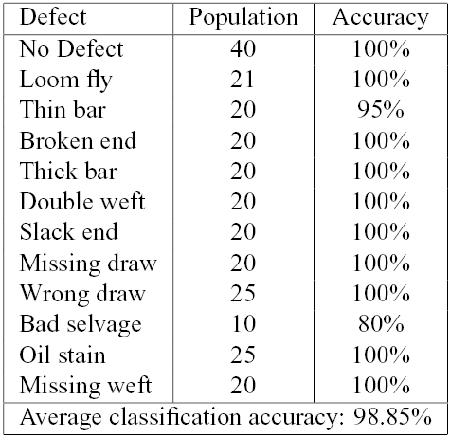 |
|
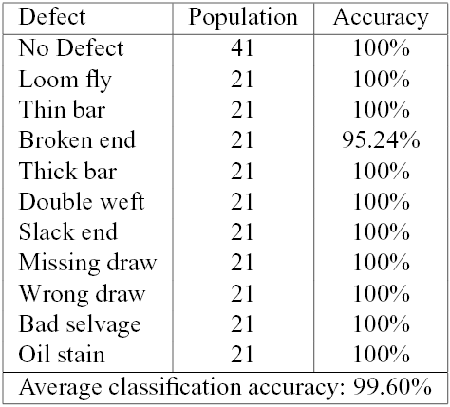 |
|
|
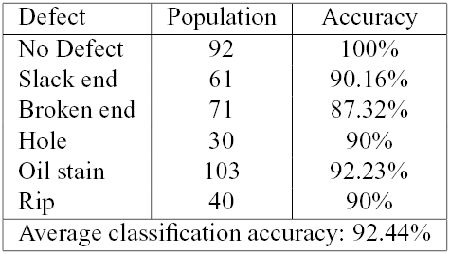 |
|
|
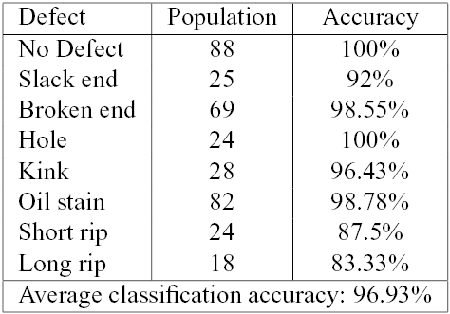 |
|
|
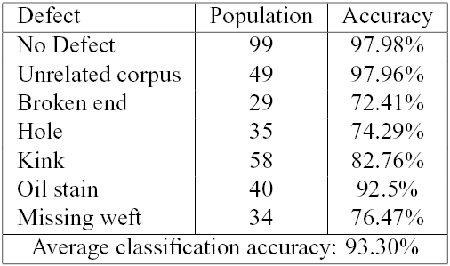 |
|
|
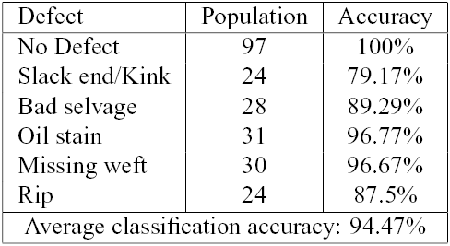 |
Rossi Angelo Ivan (AngeloIvan.Rossi(at)poste.it)